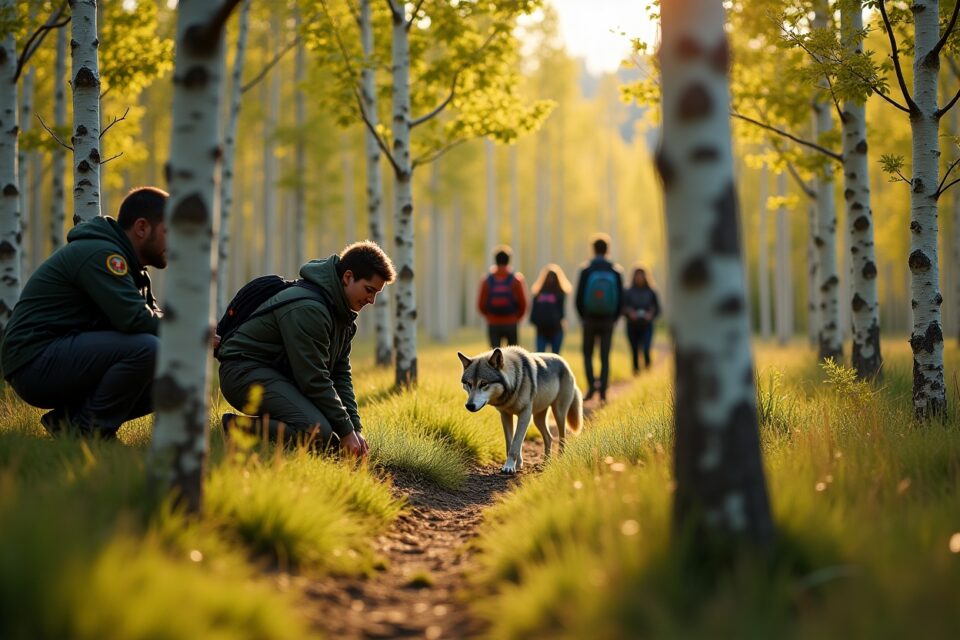The Ecological Impact of Wolves’ Return to Yellowstone National Park on Aspen Growth
Hey there! Have you ever heard about the ripple effects one species can have on an entire ecosystem? It’s kind of mind-blowing. Today, we’re diving into the fascinating tale of how the return of wolves to Yellowstone National Park has sparked a magnificent revival of aspen trees. Yes, wolves return Yellowstone is not just an iconic phrase; it’s a narrative of ecological rebirth.
Back in the day, wolves were an integral part of Yellowstone’s ecosystem, acting as apex predators that helped maintain the balance within the park. But, due to unfortunate conservation policies in the early 20th century, wolves were eradicated from the area. What followed was a classic story of unintended consequences. With no wolves to keep them in check, elk populations soared, grazing heavily on young aspen shoots until the groves dwindled significantly. This overpopulation of elk resulted in less regeneration of aspen trees, an issue that disrupted not only plant life but also the animals depending on the flora.
Flash forward to a changing mindset towards conservation. In 1995, wolves were reintroduced to Yellowstone, and here’s where it gets fascinating. Picture this: with the wolves back, it’s like nature hit the reset button. Elk, now threatened by predators again, changed their grazing patterns. This shift meant that aspen trees had a chance to grow undisturbed once more, signifying a grand resurgence of life within the park. It was a real-time ecology lesson playing out in one of our most cherished natural settings.
The comeback story of wolves in Yellowstone is a hot topic in ecology circles. Experts have been poring over this natural experiment, and studies indicate that the wolves’ hunting habits have reshaped not just elk behavior but entire plant and animal communities. According to a study discussed in a recent article, \”Biodiversity is declining due to unsustainable practices,\” highlighting how crucial balanced ecosystems are. It’s like how a well-oiled machine requires each cog to spin smoothly — take one out, and the whole thing falters.
As we look ahead, the ongoing conservation efforts in Yellowstone offer a glimmer of hope. A future where wolves help sustain a robust ecosystem provides invaluable insights into the interconnectedness of wildlife. Moving forward, this could be a model for other regions struggling with ecological imbalances. After all, when we support wildlife conservation, we’re not just protecting animals; we’re fostering diverse and thriving natural landscapes.
Before we wrap up, let’s talk about what you can do because this isn’t just a story happening far away — it’s a call to action. Support wildlife efforts, share this story with friends, or better yet, participate in local initiatives that drive conservation. You can also read this article about how forest management influences biodiversity, to understand how our forests are more than just a backdrop — they’re a vital piece of our ecological puzzle.
In a nutshell, Yellowstone’s story teaches us about the wonders of natural balance. So next time you’re out in nature or even just chatting with friends over coffee, remember how each piece of the puzzle makes a difference. 🌿
Sources:
– \”Research on the Impact of Forest Management and Biodiversity\”
– Recent conservation studies
Uncategorized
How Yellowstone Wolves Are Reviving Aspen Trees Like Never Before
